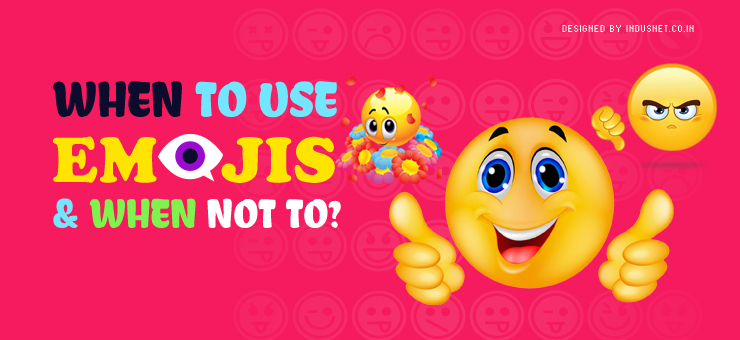
Smileys, then emoticons and now emojis; the basic idea behind these stylized facial representations is the same. Emojis are digital images, not limited to facial expressions, used to express an emotion in electronic messages. Its use became widely prevalent that it found the place in Oxford Dictionaries as its 2015 “word” of the year.
Emojis are not only used casually amongst friends but in businesses across the world. Emojis are used in market research and opinion surveys, charitable causes, business promotion, email marketing, by publishing houses, bloggers, and social media marketers and so on.
Digital communication means have evolved over the years and use of emojis has become strikingly significant among people; though it is generally seen that younger generation is more perceptive and receptive to the use of emojis. Smartphones and social media platforms have played a major role in this and have witnessed a steady rise in the use of emojis.
Perception about emojis
People have a different opinion about the use of emojis professionally. Some marketers think it assists them to connect with target audience while others consider its use unprofessional. Some feel that it saves time and easily express what they want to communicate while some consider its role very limited.
The purpose of emojis in marketing communication is still not clearly defined. Despite the fact, many marketers have already incorporated emojis into their campaigns.
According to a report by Appboy, a marketing automation company, emojis are more in use among mobile marketers for email marketing and push notification campaign. It also revealed that retailers and e-commerce marketers are more likely to use emojis in their campaigns.
USA today experimented with emojis on front page headline. Many agencies criticized it stating that it compels people to react in a particular manner to a news item. It is tough to express seriousness and sadness with emojis, as found by USA Today, which is not a good news for publishers.
This article will help you to understand when it is appropriate to use emojis in business communication.
Advantages of using emojis:
Disadvantages of using emojis:
Is your brand fit to use emojis?
Not every brand is suitable to use emojis. A lot depends on your clientele, type of product / service and brand image. Answering these questions may be of some assistance to decide on that.
Emojis should not be used in businesses where it takes you to extremities or overdoes something. For instance, a customer may generally like to react in a relieved manner for a recurring glitch you were able to resolve. In such a scenario, if you show excitement or great achievement through emojis; you may look foolish or a smug. Though it matters what kind of emoji you use, but at certain places, it may be completely unfit to use.
Who can marketers use emojis with?
Emojis give brands a chance to customize a part of the digital language.
Facebook recently released its new Reaction update that adds six emoji response buttons to existing “Like” button. The popularity of emojis is expected to rise with this introduction. However, expressing negative opinions still remains a limitation through emojis.
Marketers can selectively use emojis with the older audience even if they are not tech-savvy. Women are more inclined towards use of emojis than men, which is good for women-oriented brands.
Surprisingly, emojis can be helpful to motivate employees within a company. However, there should be a serious code of conduct for employees to know what, where and when to use emojis with customers or not use it at all.
Conclusion: Can marketers successfully engage customers through emojis?
Emojis do add a character to marketing communication, but it is hard to say right now how customers respond to it in the longer run. Marketing campaigns are resource intensive. Marketers who wish to use emojis should always test them before fully implementing them in their campaigns.
No matter what, marketers should pay attention to the context in which they use emojis. These digital images are swiftly becoming part of daily communication and are hard to ignore. A marketer must be cautious about when to use emojis so as not to offend customers and also to convey the right message in line with brand’s image.
It is also important to note that emojis can never replace direct verbal or written communication because it is the most effective way to express an opinion. Direct communication is clear and highly valued. Marketers who don’t think it right to use emojis with customers can at least use them at workplace to engage employees.